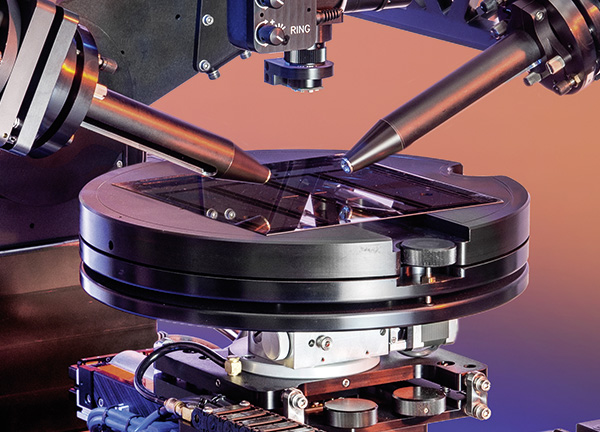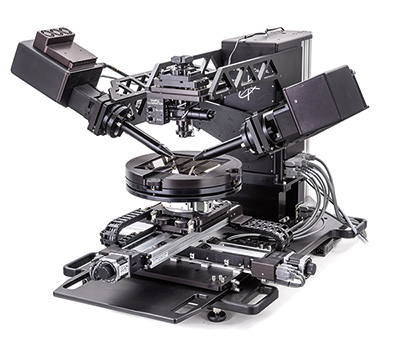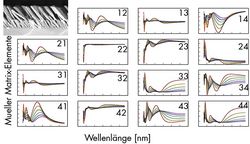Spectroscopic ellipsometer RC2 – The perfect combination!

There are six key factors in the development of an ellipsometer:
- Accuracy
- Speed
- Extended measurement functionality
- Spectral range / spectral resolution
- Range of incidence angles
- Usability
The Woollam Company has spent the past decade perfecting an ellipsometer that already surpassed other systems in these points.
Accuracy:
Compensator-based measuring techniques have boosted accuracy in state-of-the-art ellipsometer technology.
For a long time, it was difficult to find suitable compensator elements that would work well over a wide spectral range. The M-2000 was the first rotating compensator ellipsometer (RCE) for measurements from the UV to the NIR.
The special design provided sufficient phase shift over the entire spectral range. This is why it is best to have a flat compensator spectrum, which cannot be achieved with single-element compensators.
The RC2 lifts accuracy to a completely new level. It comprises two rotating compensators which are based on our patented achromatic retarders with an unsurpassed flat retardation dispersion (fig. 1). This leads to accuracies about 2.5 times higher than those of single compensator ellipsometers.
Speed:
Since both compensators are in permanent rotation, sample data is continuously collected. Thus, only minimal time is needed for a complete measurement cycle.
Combining this advantage with state-of-the-art CCD technology to collect over 1000 wavelengths simultaneously will result in the fastest available ellipsometry measurement. Even a complete Mueller-Matrix (MM) measurement can be performed in only 0.3 seconds.
Extended measurement functionality:
The majority of spectroscopic ellipsometry measurements refer to Ψ, ∆ of the polarization change, depending on the film characteristics. The RC2 does an outstanding job for these measurements. Furthermore, it allows the definition of non-ideal sample characteristics like variations in thickness or index by precisely measuring “% depolarization”. For highly complex samples where anisotropy and depolarization have to be considered, the RC2 can collect highly accurate Mueller-Matrix SE data. The complete Mueller-Matrix is measured to fully characterize the interaction between light and the sample. MM has become a preferred tool for researchers who analyze complex samples like textured films and other nano structured layers (fig. 2).
Spectral range / spectral resolution:
The RC2 covers a wide spectral range from 193 nm in the UV to 1690 nm in the NIR. All data is collected simultaneously (more than 1000 wavelengths) so that a high-resolution spectrum is generated almost instantly. The modern design of the RC2 spectrometer simultaneously splits the light onto both the UV-VIS and NIR detector arrays at very little light loss.
Range of incidence angles:
The modular RC2 entrance and receiver heads may be used with all our different units, no matter what the desired angle of incidence. This allows a variety of measurement options both in reflection and transmission. For example, the vertical design allows reflection measurements with incident angles of 20° - 90° and transmission measurements of 0° - 90°. They also allow for negative angles of incidence.

Usability:
The RC2 is controlled by the Complete EASE software that combines hardware control and sample modeling/data analysis in a convenient package.
The user interface is clear and easy to use so that even beginners can successfully work on their measurement problems.
Additional options support high-level researchers with more complex requirements.





